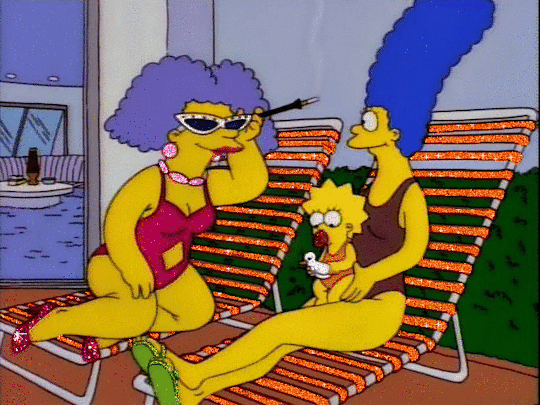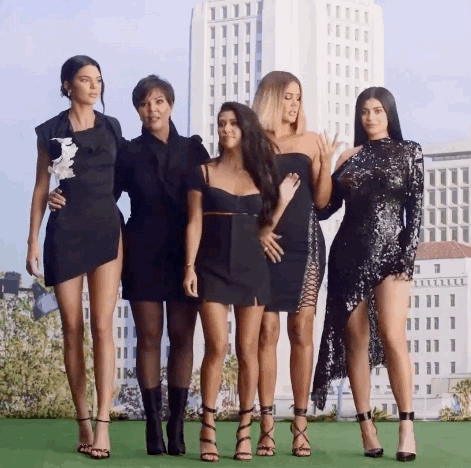Text
Week 10: Instagram Filters
In social media, we always want to present our best selves. The use of filters to make us look our best in selfies or other photos is no longer just for professional photographers. It is simple to add filters to photos to instantly increase contrast, brightness, and other photo attributes to improve the aesthetic appeal of the image. A study conducted in 2017 on 2 million Instagram accounts found that 25% of posts with the hashtag #selfie and 18% of all Instagram posts use filters (Youn 2019, p.1). How did the idea of Instagram filters begin? When Snapchat first launched, filters were the turning point for everything, and they completely changed the game. Instagram launched stories in 2016 and AR filters earlier in 2018, not wanting to miss out on this growing trend. This was a significant development in the field of augmented reality and filters in general because it now allows anyone to create original filters (Filterious n.d.)
Instagram filters will make us more attractive and give us more self-confidence by making us look our best. But over time, filters will harm our mental health. This is because spending too much time looking at filtered versions of ourselves can have an effect on our moods and sleep patterns. A reasonable amount of filtering is acceptable; however, if our online image deviates too far from our actual appearance, we become wary of meeting people in person, which increases our social anxiety and contributes to feelings of social isolation (Tara 2023).
The way we share and consume visual content has changed as a result of Instagram filters. It provides countless opportunities for individual expression and creative expression. Thus, understanding the psychology of filters will help us embrace the magic of Instagram filters and unleash our creativity when editing photos in the digital sphere.

References
Filterious n.d., Where did the ears and tongue come from? The history of Social Media filters, Filterious, viewed 16 June 2023, <https://filterious.com/short-history-of-social-media-filters/>.
Tara, W 2023, The Hidden Danger of Online Beauty Filters, Psychology Today, viewed 16 June 2023, <https://www.psychologytoday.com/intl/blog/the-clarity/202303/can-beauty-filters-damage-your-self-esteem#:~:text=If%20our%20online%20image%20deviates,to%20feelings%20of%20social%20isolation.
Youn, A 2019, ‘What Is the Ideal Instagram Filter?’, Aesthetic surgery journal. Open forum, vol. 1, no. 2, p.1.
0 notes
Text
Week 9: Body Modification on Social Media
Nowadays, social media use, particularly when it is primarily driven by photo-based platforms such as Instagram, presents a vast number of images of perfect women with near-perfect bodies and faces. On social media, celebrities, models, fitness experts, and influencers frequently have millions of followers. They produce content to promote themselves and their products by promoting idealized beauty standards (Tiggemann 2022, p.173). This has a negative effect because it encourages people to compare themselves to one another, especially young women and girls, which encourages them to follow beauty trends for the sake of social acceptance. Aside from trying to conform to a beauty standard, some body modifications may be done for a variety of reasons, such as to signify membership in a group or to highlight a person's character traits or achievements (Bradley University 2023).
The majority of the "idealized imagery" seen on social media has been digitally altered, or at the very least has had a filter applied, in which women digitally edited their original photos to remove eye bags and wrinkles, or to reshape their waists and legs (Tiggemann 2022, p.174). Additionally, peer comparisons about appearance and self-image in teenagers have been brought on by social networking sites (SNSs) like Instagram and Facebook, so people are constantly looking for feedback through likes, comments, and followers to maintain a perfect and stable image of themselves. However, if they receive negative comments or feedback about their postings, it means that they need to improve their beauty standards, which will leave them dissatisfied with their physical bodies, have doubts about their self-worth, and drive them to self-harm behaviour. Kim and Khloe Kardashian, two well-known socialites, have come under fire from the media for allegedly using Photoshop to alter their Instagram selfies so they appeared slimmer and more toned (Henriques & Patnaik 2020).
In conclusion, social media has significantly influenced how people perceive and cope with physical changes after viewing well-known Instagram and Pinterest handles. People need to be reminded that not everything they see on social media is real in order to address this problem, and that they should not be ashamed of their physical characteristics.

References
Bradley University 2023, Body Modification & Body Image, Bradley University, viewed 15 June 2023, <https://www.bradley.edu/sites/bodyproject/disability/modification/
Henriques, M, Patnaik, D 2020, Social Media and Its Effects on Beauty, InTechOpen, viewed 15 June 2023, <https://www.intechopen.com/chapters/73271>
Tiggemann, M 2022, ‘Digital modification and body image on social media: Disclaimer labels, captions, hashtags, and comments’, Body image, vol. 41, pp. 173–174.
0 notes
Text
Week 8: Digital Citizenship and Conflict: Social Media Governance
One perspective on social media communications holds that users are free to say whatever they want in their posts and that social media companies merely serve as "pass-through" intermediaries, allowing users to communicate without censoring or evaluating what they say (Tyler et al. 2021, p. 110). Social media platforms allow users to express themselves freely to the point where people are being bullied and harassed online using foul language. As part of this cybercrime, the victim is repeatedly threatened or humiliated on a digital platform by the harasser who shares defamatory posts, private information, false content, or messages about them.
The public has expressed strong disapproval of how these business owners are handling the problem of online harassment as it permeates social media. 79% of people claim that social media companies are only doing a fair or poor job of addressing online bullying or harassment on their platforms (Vogels 2021). Among all social media platforms, Instagram ranked high in the occurrence of cyber harassment where people can post images and videos followed by comments, especially young women where they will undergo sexualized forms of harassment (Abarna et al 2022, p.1) Therefore, governance encompasses all laws, policies, and regulations that are necessary for media and communications in general as well as those from other fields that have an impact on it, such as corporate law, copyright law, and laws pertaining to freedom of expression. It also includes the organisations and departments in charge of enforcing and administrating the laws, rules, and regulations (Flew 2015, p.1).
Social media platforms have developed standards, used those standards to create rules, developed machine-based and human-based surveillance systems, and created enforcement mechanisms for dealing with content deemed to have violated their standards (Tyler et al. 2021, p. 110). For instance, in the workplace, the popularity of social media platforms like Facebook and Twitter has given employees a way to communicate about their jobs. Communication professionals view it as problematic that every member of the organization is now able to spread messages to the public (Verhoeven et al 2012, p.151), because employees might publish messages which are misaligned with the organization’s corporate values. Therefore, organizations develop and implement corporate governance policies to oversee employees’ social media use.
In conclusion, users need to use social media responsibly, support one another, fight back against harassment, and protect the space for free speech online.

References
Abarna, S, Sheeba, JI, Jayasrilakshmi, S & Devaneyan, SP 2022, ‘Identification of cyber harassment and intention of target users on social media platforms’, Engineering applications of artificial intelligence, vol. 115, p. 1.
Flew, T 2015, ‘Social media governance’, Social Media+ Society, viewed 15 June 2023, < https://journals.sagepub.com/doi/pdf/10.1177/2056305115578136>
Tyler, T, Katsaros, M, Meares, T & Venkatesh, S 2021, ‘Social media governance: can social media companies motivate voluntary rule following behavior among their users?’, Journal of experimental criminology, vol. 17, no. 1, p. 110.
Van den Berg, AC & Verhoeven, JWM 2017, ‘Understanding social media governance: seizing opportunities, staying out of trouble’, Corporate communications, vol. 22, no. 1, p. 151.
Vogels, EA 2021, The State of Harassment, Pew Research Center, viewed 15 June 2023, <https://www.pewresearch.org/internet/2021/01/13/the-state-of-online-harassment/>
0 notes
Text
Week 7: Slow Fashion
Rapid production, short lead times, and an increase in the number of fashion seasons with less expensive labor and materials have been common practices in the apparel industry for decades (Bhardwaj & Fairhurst, cited in Jung & Jin 2014, p.512). Most frequently, the term "fast fashion" refers to a business strategy that establishes an effective supply chain in order to quickly produce trendy goods while meeting consumer demand (Levy and Weitz, cited in Watson & Yan 2008, p. 141). Major clothing retailers like Zara, H&M, and Forever 21 have adopted this fast fashion business strategy. Quick-changing fashion trends nowadays have produced "perishable fashion clothes" by purposefully reducing the product's lifespan, leading to "clothes to be worn 10 times" (Byun and Sternquist, cited in Jung & Jin 2014, p.512).
To tackle this issue, retailers who create durable clothing that is typically not in response to rapidly shifting fashion trends are frequently labelled as practising "slow fashion”. Slow fashion came in place where it is about designing, producing, consuming and living better by considering environmental and social sustainability and by producing beautiful and conscientious garments at a lower speed. Slow fashion is not just about slowing down the pace of fashion cycle, it is rather a shift in mindset of the consumers from focusing on quantity to quality (Fletcher, cited in Jung & Jin 2014, p. 512). Slow fashion incorporates concepts such as using greener fibres, utilizing technology to reduce waste and pollution, or taking into account the movement of the product through the supply chain.
People are becoming more aware of "ethical consumerism," in which consumers demand environmentally friendly goods or the workers who made them. Studies have indicated that consumers are often willing to pay more for “green” products or “sweat-free” goods. It is good to see the tendency that people are aware on environmental issues as well as fair work in the fashion industry and are starting to demand organic materials and clothes (Johansson 2010).
Most millennials in particular those born between the early 1980s and the early 21st century have a strong affinity for technology and they will to live a modest lifestyle because they were born during a time when concepts like "sustainability," "fair trade," "authenticity," "organic," and "artisanal" were popular (Yazici, cited in Araujo 2022, p. 621). Therefore, it is best for designers, manufacturers, distributors and retailers to understand how millennials consume through their habits and desires to be more sustainable in the fashion industry. In conclusion, slow fashion is a movement that aims to change culture by enlightening customers and giving them access to better-made, more durable products. That said, slow fashion is more likely to grow in popularity over the next years.

References
ARAÚJO, MKFD, MESQUITA, RFD, MATOS, FRN & SOBREIRA, MDC 2022, ‘FASHION CONSUMPTION PRACTICES OF MILLENNIALS WOMEN: BETWEEN FAST AND SLOW FASHION’, Revista de administração da UFSM, vol. 15, no. 4, p. 621.
Johansson, E 2010, ‘Slow Fashion- the answer for a sustainable fashion industry?', The Swedish School of Textiles, 15 September, viewed 14 June 2023, < https://www.diva-portal.org/smash/get/diva2:1312116/FULLTEXT01.pdf>
Jung, S & Jin, B 2014, ‘theoretical investigation of slow fashion: sustainable future of the apparel industry’, International journal of consumer studies, vol. 38, no. 5, p. 512.
Zarley Watson, M & Yan, R-N 2013, ‘An exploratory study of the decision processes of fast versus slow fashion consumers’, Journal of fashion marketing and management, vol. 17, no. 2, p. 141.
0 notes
Text
Week 6: Hashtags and Activism
Hashtags
The digital age has taken over the way we communicate, debate, interact and protest. New communication technologies had significantly changed the method of initiating coordinating social movements and protest. The role of hashtags in coordinating publics has been used from general political discussions to protest especially Twitter hashtags such as #ausvotes for 2010 and 2013 Australian elections and #londonriots for the coordination of information and political debates around the 2011 unrest in London (Rambukkana 2015, p.14). According to Twitter, #Fugerson was the most used social-issue hashtag in the 10-year history of the platform while #BlackLivesMatter was the third (Anderson, 2022). Research had highlighted the role of Twitter hashtags to coordinate a distributed discussion among large numbers of users who do not need to follow existing follower networks to be connected.
What is activism?
Moving on, what is activism? According to Masterclass (2022), activism describes the practice of awareness, lobbying for change, giving support for a cause on political change, social movements and belief. In brief, it indicates the action of using campaigns to demand for a political and social change. Social media campaigns also known as “hashtags activism” where users can share contents using graphics, videos and photos about a common cause especially among younger generations. Social media activism had become clear in 2020 with hashtags Black Lives Matter. Social media activism with hashtags are relatively new compared to protests, petitions, demonstrations and letter writing, yet it has attracted media attention and the participation of citizens on issues like human rights violations, justice for victims, opposition against government, awareness on environment etc (Goswami 2018, p. 3). It does not take much effort to become an activist because hashtag activism doesn’t require any action from the users other than ‘sharing’, ‘liking’ contents or ‘retweeting’ tweets on Twitter which is already a big difference to bring a change on a common cause. In summary, hashtags are a powerful tool for activists to generate supports across various social media platforms to connect like-minded individuals for a social change.

References
Anderson, M 2016, The hashtag #BlackLivesMatter emerges: Social activism on Twitter, Pew Research Center, viewed 11 May 2023, < https://www.pewresearch.org/internet/2016/08/15/the-hashtag-blacklivesmatter-emerges-social-activism-on-twitter/>
Goswami, MP 2018, ‘Social Media and Hashtag Activism’, Department of Journalism and Mass Communication, p.3, viewed 12 May 2023, <https://www.researchgate.net/profile/Manash-Goswami-2/publication/326655352_Social_Media_and_Hashtag_Activism/links/5c09dc10a6fdcc494fdf72b8/Social-Media-and-Hashtag-Activism.pdf>
Human Rights Careers n.d., 5 Types of Activism, Human Rights Careers, viewed 10 May 2023, <https://www.humanrightscareers.com/issues/types-of-activism/>
Rambukkana, N 2015, Hashtag publics : the power and politics of discursive networks, N Rambukkana (ed.),, Peter Lang, New York.
0 notes
Text
Week 5: Reality TV and Social Media
Reality TV is a type of unscripted television programming that does not employ actors and documents real-life situations where they often use a host to run the show or a narrator to run the show or set up the stage for the event to unfold. Reality TV is unlike scripted shows like sitcoms, dramas and newscasts because it does not require writers or actors (Winifred 2021). However, many realities show has open casting calls to see person in person, but we are still able to apply without getting off your couch. If you are a person who wants to fall in love, show off your skills and travel around the world but on television? Reality TV shows are great opportunity for talented people get discovered.
Why is reality TV shows widespread? If you think about it, people love to watch the lives of other people especially what celebrities do and discover how they live, their struggles on businesses and relationships like The Kardashians, The Real Housewives etc. Besides watching these people’s drama, we can witness a wide range of personality traits and relationship archetypes where people discover celebrities that they can identify (Gruber, 2022). Besides, talent shows give rise to some of the reality TV stars where it remains at the top of celebrity food chains for example Perrie Edwards who became famous thanks to X-Factor are of the contestant with highest-earning reality TV contestants.

Nowadays, social networking sites (SNSs) such as Facebook, YouTube and Instagram are changing the dynamics of the audience-media character relationship. According to Chung and Cho (2014, p.47), SNSs have changed this one-side relationship to more interactive where audiences will talk about their favourite celebrities or even creating memes on social media and getting to more about them by peeking into their personal lives on Instagram. The lists of celebrities who became popular from reality TV is basically endless (Graham, 2022). Taking The Kardashians Jenner family clan as an example again, their reality TV show is what put them on radar at the beginning of their careers. Each of the sisters have over 100 million followers on Instagram and reality TV may no longer be their main line of work.

In conclusion, reality tv and social media is a good combination because people like to talk about interesting people or people or people who have strong opinions about reality celebrities for conversations. The relationship between reality TV and social media are mutually beneficial because social media networks provide a fandom for audiences to talk about reality TV while reality TV shows encourage audiences to share their opinions with hashtags on social media.
References
Anna, G 2022, The Rise Of Modern Stars: From Reality TV Shows To Instagram Influencers, Fizzy Mag, viewed 4 May 2023, <https://fizzymag.com/articles/the-rise-of-modern-stars-from-reality-tv-shows-to-instagram-influencers >
Chung, S & Cho, H 2014, ‘Parasocial relationship via reality TV and social media: its implications for celebrity endorsement’, Proceedings of the ACM International Conference on interactive experiences for tv and online video, p.- 47.
Gruber, M 2022, Why do we love reality TV shows so much?, Ready Steady Cut, viewed 4 May 2023, <https://readysteadycut.com/2022/07/19/why-do-we-love-reality-tv-shows-so-much/#:~:text=If%20you%20think%20about%20it,in%20the%20last%20several%20decades.>
Winifred, FM 2021, How Reality TV Works, HowStuffWorks, viewed 4 May 2023, < https://entertainment.howstuffworks.com/amazing-race.htm>
0 notes
Text
Week 4: Is blogging culture still popular compared to social media sites?
What is blogging?
Blogging refers to self-published media online for individuals to write diary-style entries on topics that interests them. Different content blog varies in different blog style, travel blogs will feature more pictures than words while news blog may weigh in with words of the news. Blogs are usually simple website where writers will publish original content where it usually just a single page that can be scrolled through.

According to Duermyer (2022), people often confuse with a blog and traditional websites. Firstly, blog is frequently update by writer despite whatever topics being shared, there will be new content uploaded several times a week while website is stated information that rarely changes. Secondly, blog encourages interaction where readers can leave their comments, although some websites did incorporate “leave a message” or similar features, it is still usually considered as one-way communication and less interactive compared to blog.
Are social media sites taking over blogging culture?
Considering that each platform serves a different purpose and has its own advantages and disadvantages, it is challenging to say with certainty whether social media sites are replacing the blogging culture. Social media sites exist and evolve in many forms such as videos, social networks, text, emails and blogs to boost engagement experiences and advertising effectiveness (Bui 2022, p.602).
According to Ong (2023), social media sites is the most popular channel for driving blog traffic where bloggers make the most money over $50,000 per year from their blogs are over twice as likely to focus on getting email subscribers compared to lower-income bloggers. Besides, social media networks help to drive traffic and grow your brand to more opportunities. Could not deny the fact that nowadays more people are leaning towards social media sites it helps bloggers in many ways, but it is not absolutely a need for them. Blogging culture is still important because there are more than 600 million blogs out of 1.9 billion websites worldwide and 77% of internet users read blogs and nearly 26% of people in the U.K. aged 5-18 are reading blogs. In conclusion, social media has had a significant impact on the culture of blogging, but blogs are still active, and both platforms coexist and develop at the same time.
References
Bui, HT 2022, ‘Exploring and explaining older consumers’ behaviour in the boom of social media’, International journal of consumer studies, vol. 46, no. 2, p. 602.
Duermyer, R 2022, What Is Blogging?, The Balance, viewed 3 May 2023, < https://www.thebalancemoney.com/blogging-what-is-it-1794405>.
Ong, SQ 2023, 59 Blogging Statistics for 2023, ahrefsblog, viewed 4 May 2023, < https://ahrefs.com/blog/blogging-statistics/#:~:text=Top%20blogging%20statistics,-These%20are%20the&text=There%20are%20more%20than%20600,are%20reading%20blogs%20(Statista>.
0 notes
Text
Week 3: The internet as new public Sphere
What is Public Sphere?
The public sphere is controlled by powerful groups, where a selected few may shape public opinion while oppressed and lower-class communities are excluded according to Habermas (Bondarenko, Kaptiurova and Orlova 2021, p. 95). The purpose of the public sphere should encourage change and impact the public. A thriving public sphere create space for conversation, debate and decision making on behalf of public interest which can develop better neighbourhood and better citizens.

Habermas’s concept of public sphere form where state-related activities should be publicly accessible whereby the public’s opinion should be heard to permit democracy control (Pearson, 2013). A public sphere is qualified provided when the environment is free from institutional influence, coercion and surveillance where everyone can participate and access information equally. As such, citizens will pay attention to public sphere when they can voice out their opinions effectively regarding political decision making through public date or when public sphere addresses democratic problems (Goenaga 2022, p.230).
The Internet as public sphere
Internet has created a new public sphere which allows individuals to participate in discussions much easier in ways that previously was not possible. Throughout the years, communication technologies from print media such as television, radio etc have moved to electronic domains because people relied on various forms of mass media (Matačinskaitė 2011, p. 93). Over the web, exchange of services and information such as government webpages or proceedings can easily be obtained by users on the internet at very low cost.
The public sphere is also getting revitalized because there is a greater presence of a number of social networking channels where people across the world can express their opinions. A public sphere is possible only when there is a balanced relationship between state and civil society according to Dalgren. A good example to showcase the new public sphere are social media sites like Facebook and Twitter.
Facebook has various features that has potential for public discourse such as Pages, Groups, hashtags and events that facilitate the formation of public opinion. For instance, a Facebook user can create or join up to 200 groups where the groups are generally centered on a particular interest or activity, users can post or share relevant information and get notified on group activities. Facebook was used to discuss about pertinent issues like elections, Super Bowl and the government shutdown back in 2013 (Yetkinel & Colak 2017, p. 5013). Besides Facebook, Twitter empowers its users to become broadcasters of important events where people discuss political issues with hashtags. To sum up, social media sites are the key medium for anyone who has access to the internet to share their opinion and debate on important issues.
References
Bondarenko, V, Kaptiurova, O & Orlova, V 2021, ‘BLACKLIVESMATTER and struggle over national discourse on Twitter: digital activism as new public sphere’, Current issues of Ukrainian linguistics theory and practice, no. 42, pp. 90–95.
GOENAGA, A 2022, ‘Who cares about the public sphere?’, European journal of political research, vol. 61, no. 1, Wiley Subscription Services, Inc, Oxford, pp. 230–254.
Matačinskaitė, J 2011, ‘The Internet as a “Public Sphere”: The New York Times website case study’, Science journal (Communication and information), vol 4, pp. 91-96, viewed 4 May 2023, <https://www.journals.vu.lt/zurnalistikos-tyrimai/article/download/1788/1060/>
Pearson, E 2013, Media Studies 101, BCcampus, Place of publication not identified. < https://opentextbc.ca/mediastudies101/chapter/habermas-public-sphere/>.
Yetkinel, Ö & Çolak, M 2017, ‘The Effects of Transformation of Public Sphere with the New Media in Academy’, Eurasia Journal of Mathematics, Science and Technology Education, vol. 13, no. 8, East Sussex, p. 5013.
.
1 note
·
View note